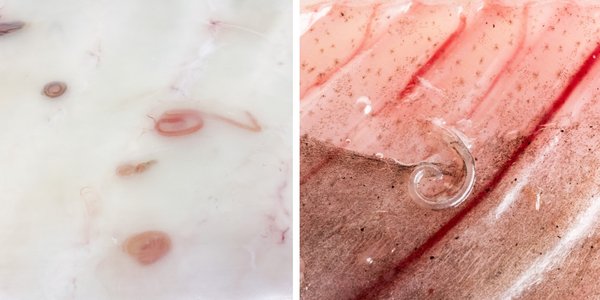Topic: Monitoring seafood

Published: 27.03.2019 Updated: 16.06.2025
In Norway, the Food Safety Authority is responsible for taking samples of farmed fish and fish feed, and the Institute of Marine Research conducts the analyses and report the results.
In addition to its annual monitoring of farmed fish, since 2006 the Institute of Marine Research has mapped undesirable substances in large surveillance studies known as baseline studies of commercially important species such as cod, herring, mackerel and saithe. Baseline studies have also been conducted for some fish species with a particular risk of exceeding threshold values, such as halibut, tusk, ling and crab.
Monitoring of wild fish, shellfish and crustaceans
In the monitoring, samples are taken in the area where commercial fisheries are being conducted The aim of the large surveillance studies is to relate variations in levels of undesirable substances to factors such as geographical location, season and age. The investigations give an overview of the levels of undesirable substances in various species along the Norwegian coast.
The results of the baseline studies also provide the foundation for subsequent monitoring of each individual species. This follow-up is to ensure that any changes in the levels of undesirable substances are registered and involves taking annual samples of cod, saithe and mackerel, and every third year, samples of herring in the North Sea and Norwegian Sea. Some species are harvested in low volumes and baseline studies are not conducted instead, spot checks are performed.
Monitoring of farmed fish
Each year, the Institute of Marine Research analyses levels of undesirable substances in farmed fish on behalf of the Norwegian Food Safety Authority. The monitoring of farmed fish is regulated by EU Directive (96/23) and requires the Food Safety Authority to take one sample for every ton of farmed fish produced. In recent years, samples have been taken of around 12,000 farmed fish each year.
The samples are analysed either individually or in batches of five fish at a time. A third of the samples are analysed for illegal substances, while the rest are analysed for traces of undesirable substances. Details of the numbers, analyses and results can be found in our annual monitoring report (link).
When a substance exceeds the EU maximum level, the Food Safety Authority is notified. The Food Safety Authority takes action if necessary, for example by issuing warnings or imposing restrictions.
Monitoring of fish feed
The Institute of Marine Research (IMR) monitors fish feed each year on behalf of the Norwegian Food Safety Authority. The Food Safety Authority perform the sampling from the feed producers and factories across Norway at different times of the year. The feed and feed ingredients, both of marine and plant-based origion, are analysed for nutrients and undesirable substances. The aim is to obtain a representative selection of fish feed and feed ingredients that are used in Norwegian fish feed production, and thereby map potential risks from feed to public health, fish health, fish welfare and the environment.
Norway follows EU regulations on animal feed, meaning that its legislation is regularly changed and updated in line with the EU regulations. Results from our monitoring activity can be found in the annual report on hi.no.
Threshold values for seafood
A threshold value for a substance in a food product indicates the maximum level of that substance allowed in products sold as food. The threshold value is not directly toxicological based, but derived from the ALARA principle (as low as reasonable achievable) and aims to prevent products with levels exceeding the threshold to reach the marked. The threshold values for a given undesirable substance may vary from food product to food product.
The EU Commission sets the threshold values in food while they are implemented in Norway by the Food Safety Authority.
Tolerable Weekly Intake – TWI
The Tolerable Weekly Intake (TWI) refers to the amount of a potential harmful substance that can be consumed each week throughout your life without any risk of adverse health effects. TWI is expressed per kilo of body weight and used for organic contaminants and heavy metals.
Acceptable Daily Intake – ADI
The Acceptable Daily Intake (ADI) refers to the amount of a substance that can be consumed each day throughout your life without any risk of adverse health effects. ADI is used for additives and pesticides that can be legally added to food or that are used in food production. Before being approved for use by the authorities, the substance must have been assessed and evaluated.
How are the Tolerable Weekly Intake and Acceptable Daily Intake set?
The assessments are made by international expert committees such as the European Food Safety Authority (EFSA) and Joint FAO/WHO Expert Committee on Food Additives (JECFA).
The TWI of a potential harmful substance is based on population studies or on animal testing done on the most sensitive species. Before establishing the TWI for humans, an uncertainty factor is added to the highest level of a substance that do not have any negative effect on test animals The uncertainty factor take into account intraspecies toxicokinetic and toxicodynamic differences.
